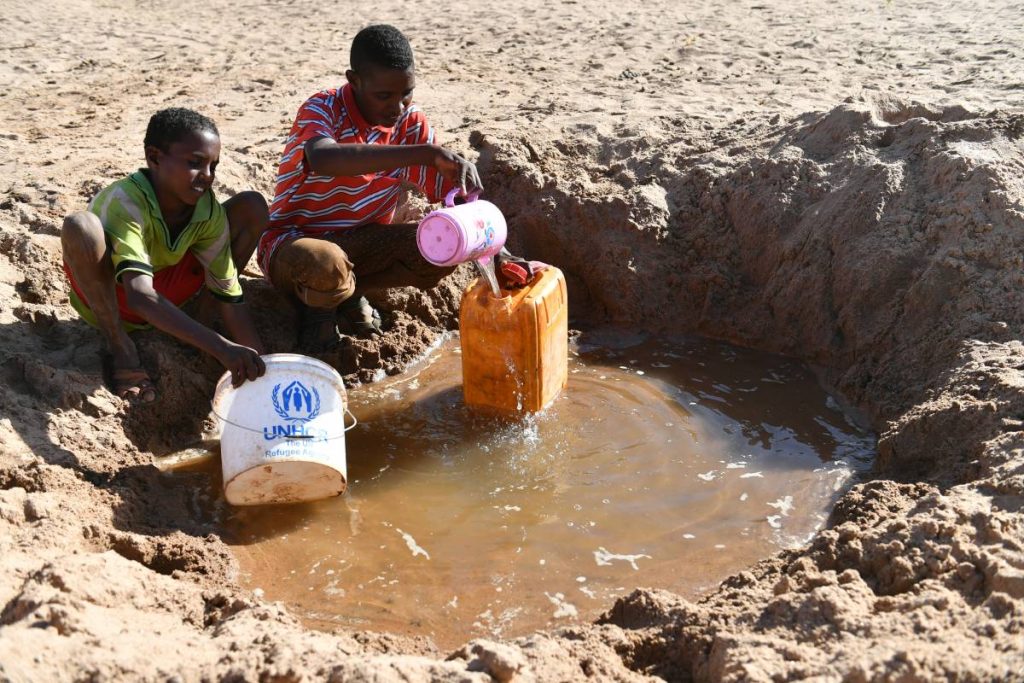Unicef faces funding gap to meet needs of 9.9mn Ethiopians
The Unicef disclosed that it has only received 22 per cent of the $351 million it requires to meet the needs of 9.9 million people in Ethiopia.
In a Humanitarian Situation report, the UN agency said it needs the funds to meet the needs of 9.9 million people impacted by drought conditions in four regions of Ethiopia. The appeal also includes funds needed to help 4.45 million children in Ethiopia, reports Xinhua news agency.
Unicef aims to provide life-saving supplies as well as standard health, nutrition, educational and sanitary services assistance to the needy.
The report further revealed that nearly 650,000 children are out of school in Ethiopia’s Oromia, Southern and Somali regions due to drought conditions. It also disclosed the drought condition has forced the closure of 2,000 schools across Ethiopia.
ALSO READ: 3,410 Ethiopians repatriated from Saudi
“Over four million people in 214 hotspot locations in the drought affected regions are in urgent need of water,” the Unicef report added.
The Horn of Africa region including Ethiopia is facing the worst climate-induced drought condition in 40 years.

Ukraine War
The ongoing Ukraine crisis is negatively affecting East Africa’s food security through reduced food supplies, accessibility and high prices of food, fuel and fertilizer, the United Nations World Food Program (WFP) warned.
Export restrictions on grains, vegetable oil and fertilizers have surged since the start of the Ukraine-Russia conflict, the scale having reached the levels of the 2008 global food crisis in terms of share of global trade, the WFP said in its latest situation update on the food security conditions in Eastern Africa.
Noting the Eastern Africa region’s high dependence on food and fertilizer imports, the WFP said the Ukraine crisis could further exacerbate the already dire food security situation across countries in the Eastern Africa region.
WFP estimated that the ensuing inflation from the Ukraine crisis could push additional 7 to 10 million people into acute hunger in Eastern Africa in 2022.
“Already, the region witnessed significant short-term jumps in prices of wheat, bread, fuel and fertilizer and widespread shortages of fuel, the most affected being Kenya, Somalia, Uganda, Ethiopia, South Sudan, and Burundi,” it said.
According to the WFP, Ukraine and Russia have restricted exports of wheat and other food products equivalent to 42 percent of total calories in restricted products. Indonesia has banned palm oil exports while Turkey, Kyrgyzstan and Kazakhstan have imposed export bans on a variety of grain products, it was noted.
It said nearly half of Uganda (43 percent), Eritrea (43 percent) and Sudan’s (47 percent) imported food calories have been affected by export restrictions, largely due to Russia and Ukraine wheat export bans.
The share of global restricted exports to Kenya stands at 20 percent, in Somalia (20 percent) while relatively lower in South Sudan (9 percent), it said.
The WFP said fuel prices jumped by 5 percent to historical high in Kenya, while wheat prices increased by a record 59 percent in Ethiopia, the highest since 2016, just within two weeks of the Ukraine crisis.
Fertilizer prices have doubled in Kenya and tripled in Ethiopia, which together with fuel prices, will affect 2022 yields and crop production and worsen the food price crisis, it said.
Figures from the WFP show that consumption of fuel, fertilizer, wheat and vegetable oil have low substitution elasticity to price increases, likely to pile pressure on low foreign exchange reserves and current account balances of Ethiopia, Sudan, South Sudan and Burundi.
ALSO READ: World Bank announces $300 mn rehabilitation fund for Ethiopia
The overlapping food crisis risks in the region comes at a time when most countries are facing increased fiscal imbalances and rising public debt pressure, limiting capacity of public-backed subsidies and social protection systems to cover food gaps of the most vulnerable, it said.
According to the WFP, the COVID-19 pandemic, which set off the worst global recession in over a century, aggravated the pre-existing vulnerabilities, which has now been worsened by the global fallout of the Ukraine crisis.
Countries in the region were able to bounce back from the COVID-19 setbacks, recording impressive economic growth in 2021. The strongest recovery in GDP growth was recorded in Kenya at 7.4 percent, while all others were higher than 2.5 percent except for Sudan, it was noted.

Leave a Reply